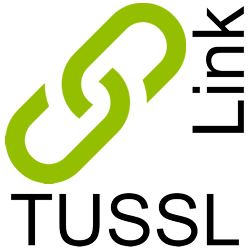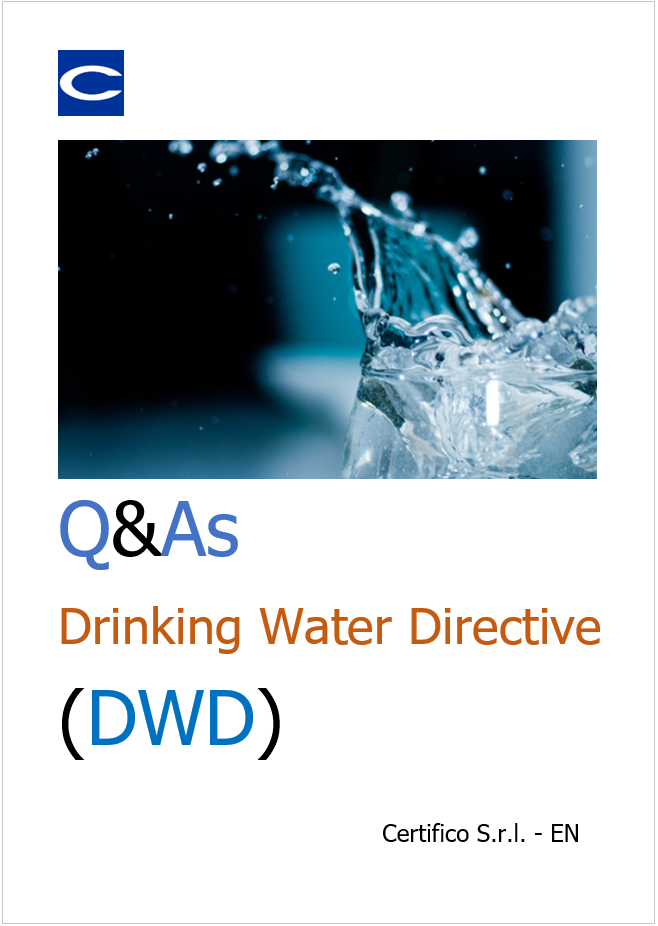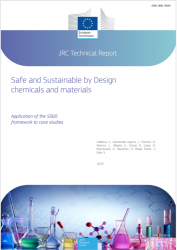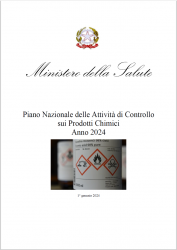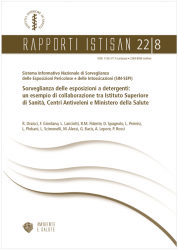Q&As on Drinking Water Directive
| ID 24079 | | Visite: 1243 | Documenti Riservati Chemicals | Permalink: https://www.certifico.com/id/24079 |
Q&As on Drinking Water Directive / ECHA June 2025
ID 24079 | 05.06.2025 / Attached
The EU adopted the recast Drinking Water Directive in December 2020 and the Directive entered into force in January 2021. Member States have to transpose the Directive into national law and comply with its provisions by 12 January 2023. The recast Drinking Water Directive (DWD) will further protect human health thanks to updated water quality standards, tackling pollutants of concern, such as endocrine disruptors and microplastics, and leading to even cleaner water from the tap for all.
The Directive applies to:
- all water, either in its original state or after treatment, intended for drinking, cooking, food preparation or other domestic purposes in both public and private premises, regardless of its origin and whether it is supplied from a distribution network, supplied from a tanker or put into bottles or containers, including spring waters;all water used in any food business for manufacturing, processing, preserving or marketing of products or substances intended for human consumption.
Key features of the revised Directive are:
- reinforced water quality standards, in line or, in some cases, even more stringent than the World Health Organisation (WHO) recommendations
- tackling emerging pollutants, such as endocrine disruptors and PFAs, as well as microplastics
- a preventive approach favouring actions to reduce pollution at source by introducing the risk-based approach
- measures to ensure better access to water, particularly for vulnerable and marginalised groups
- measures to promote tap water, including in public spaces and restaurants, to reduce (plastic) bottle consumption
- harmonisation of the quality standards for materials and products in contact with water
- measures to reduce water leakages and to increase transparency of the sector
Q&As on Drinking Water Directive (DWD)
|
Below which concentration value an impurity can be neglected and not declared in the DWD application? |
The thresholds are provided under Point 1.3.3. of the Table of Annex I to Commission Implementing Decision (EU) 2024/365. Specifically:For starting substances and organic cementitious constituents, impurities can be ignored if where they are present at or below 0,02 % (w/w) concentration in the formulation of the final material OR at a concentration below 0,1 % (w/w) in the substance (considering information submitted under points 2.4.1. and 2.4.2. of Table 1 of Annex II).For metallic compositions, impurities can be ignored if present at or below 0,02 % (w/w) concentration in the composition.For enamels, ceramic and other inorganic compositions, impurities can be ignored if present at or below 0,02 % (w/w) concentration in the composition; however, cadmium (Cd) and lead (Pb) must never be ignored. |
|
What are the additional requirements for polymers? |
Additional information requirements for applications submitted for polymers and pre-polymers are prescribed under Point 1.5 of the Table of Annex I to Commission Implementing Decision (EU) 2024/365 and are explained in ECHA’s Guidance document Volume I (Section 2.4). |
|
What material must be used as a test material for physical migration testing in case of a starting substance that functions as a monomer? |
The material, or test piece, for migration studies in case of a monomer should be the final material that is manufactured using the monomer and is then used in the product that comes into contact with water intended for human consumption.An applicant should describe the intended use of the applied-for entry as described in Annex II to Commission Implementing Decision (EU) 2024/365 (Intended use).In the case of monomers, an applicant should also consider the non-intentionally added species (NIAS), as stipulated in the implementing legislation. |
|
If different users are using different (co-)polymers based on the same starting substance monomer, which (co-)polymer must undergo physical migration testing and in which Surface-to-Volume ratio? |
The migration study should be conducted under worst foreseeable conditions. This means that whichever material reported under the intended use gives highest migration of a substance should be tested. To demonstrate highest migration, it is possible (and generally advisable) that all the materials be tested to demonstrate which one results in the highest migration.Concerning Surface-to-Volume (S/V) ratio, for organic materials the highest one allowed by the EN 12873 should be used to maximise the migration rate and the concentration at the tap (Ctap). In the case where the starting substance would have very low water solubility, and the test water is expected to saturate in the migration test, then a low S/V ratio should be considered. This could be a rare scenario but should not be overlooked.It should be noted that when applying for a starting substance that is used in different materials, it is important to capture all relevant chemical species which may migrate from those relevant materials. This may mean that more than one material may need to be tested if their manufacture and use would generate different relevant chemical species. |
|
Does an applicant have to re-submit data (e.g. on physico-chemical or toxicological properties) that have been included in a REACH registration dossier? |
Re-submission of data originally generated for the purposes of the REACH regulation is required to ensure that the DWD dossier will meet the relevant DWD information requirements. However, IUCLID supports reusing data that an applicant has already used for REACH (or other regulatory requirements supported by IUCLID). The same substance datasets can be reused as a starting point and the relevant working context for DWD applications can be applied. There is no need to retype data already available in IUCLID. For example, all the physico-chemical properties, except ‘Melt flow index’ are already harmonised, and the same documents are used both for REACH and DWD submission purposes. |
|
What are the benefits of multiple economic operators collaborating in submitting a single DWD application for a substance? |
If an economic operator has an interest in a specific starting substance, composition or constituent but allows someone else to be responsible for the DWD Notification of intention and application, they are taking the risk of several unfortunate scenarios playing out, for instance:If the applicant, for whatever reason, decides not to apply because their business plans change, they may not feel obliged to alert other economic operators to this change of plans. Other economic operators will be left without an application and possibly run out of time for preparing and submitting their own application. This could mean that the entry expires and access to the market is lost.If the applicant, for whatever reason, decides to modify the scope of the submitted application, other economic operators may find out only after the application has been submitted and published by ECHA that their own specific use of the substance is not covered by the application. Similarly, even if the applicant aims to cover all relevant uses but does not have nor include relevant information into the application information, RAC may reach an opinion which may not be positive for all the applied-for uses.If the applicant has different non-intentionally added relevant species (e.g. impurities) compared to other economic operators, the submitted application may not cover all the needs of the latter stakeholders, thus potentially impacting the certification of products relevant to other stakeholders’ supply chain. |
|
How cost and data are to be shared among interested parties for the purpose of a DWD application? |
Generic advice on cost and data sharing is provided in section 1.5 of ECHA’s DWD Guidance Volume I. ECHA has no formal role in cost and data sharing under the DWD; the Agency cannot intervene in any disputes and all such sharing considerations need to be taken care of outside the notification and application processes. |
|
Can I update my DWD application after I have successfully submitted to ECHA? |
Spontaneous updates to the IUCLID dossier of a DWD application are not permitted. Updates to a previously submitted DWD application are only permitted upon ECHA’s request and in the following situations:Upon failure during the assessment of the scope of the application as part of the accordance check (Article 4(1)(b) of Commission Delegated Regulation (EU) 2024/369); orUpon failure during the assessment of whether the application has met the information requirements as part of the accordance check (Article 4(1)(a) of Commission Delegated Regulation (EU) 2024/369); orUpon request by ECHA for clarification during the preparation of RAC’s scientific opinion on the DWD application (Article 13(1) of Commission Delegated Regulation (EU) 2024/369) |
|
Will there be a fee for DWD application? |
There is currently no provision for a fee for the DWD application. |
|
If no application is submitted to review an entry on the European positive list, what is the consequence for that entry and for products that depend on it? |
If no application is made to review an entry on the European positive list, the authorisation of that starting substance, composition or constituent will expire on the expiry date and the European Commission will remove it from the European positive list.Any relevant product certificates which are valid on the date of expiration of the positive list entry will continue to be valid until their own expiration date. |
|
If the expiry date is 31 December 2028, when should the application be submitted? |
The timing of application submission is the choice of the applicant. The earliest that an application can be submitted is 31 December 2026.If the applicant’s wish is to extend the validity of the starting substance, composition or constituent on the European positive list beyond its expiry date and ensure that the entry remains valid until the European Commission issues a decision on the application, the application must be submitted to ECHA in the period 31.12.2026-30.06.2027, in line with Article 4(9) of Commission Delegated Regulation (EU) 2024/369. |
Fonte: ECHA
Collegati
Guidance on Drinking Water Directive (DWD)
Direttiva (UE) 2020/2184
Pacchetto MOCA acque destinate consumo umano / 23 Aprile 2024
Decisione di esecuzione (UE) 2024/365
| Descrizione | Livello | Dimensione | Downloads | |
|---|---|---|---|---|
| Q As on Drinking Water Directive.pdf Certifico Srl - Rev. 0.0 2025 |
172 kB | 18 |
Tags: Chemicals Abbonati Chemicals Acque




























